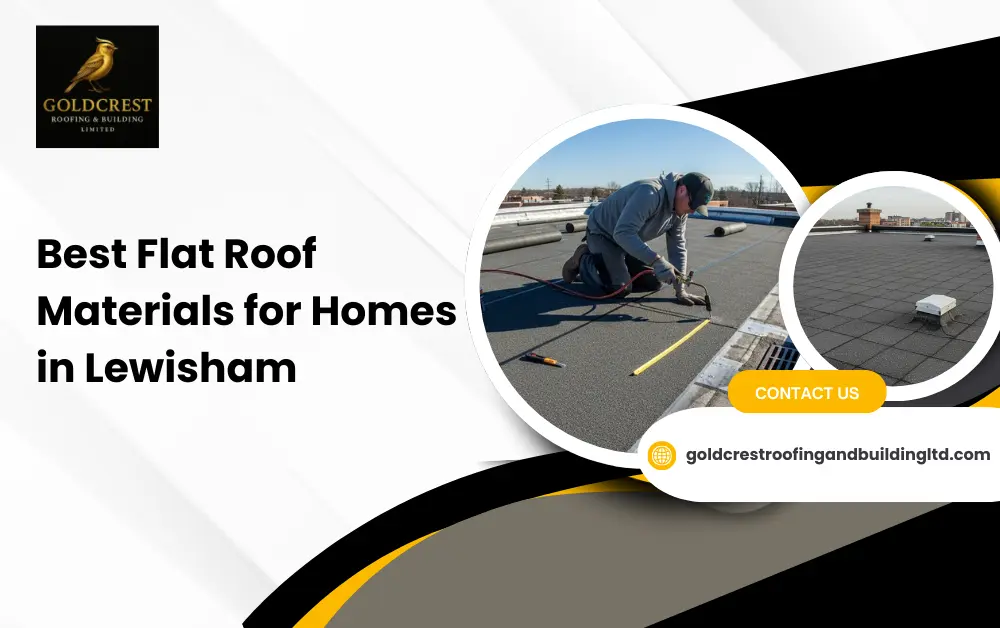Choosing the right material for a flat roof in Lewisham can be overwhelming with so many options available. But the right choice isn’t just about looks; it’s what keeps your home or building safe from leaks, weather, and costly repairs for years. If you’re replacing an old roof or installing one for the first time, knowing the best flat roof materials is key to getting something durable, efficient, and built to last.
In this guide, we’ll take you through the top flat roofing options, highlighting what makes each one stand out and explaining which one works best for different needs, so you can make a smart, confident choice for your home or building.
Different Flat Roof Materials and Their Uses
Some flat roofing materials are better for homes, while others are designed for heavy use in commercial buildings. Below, we’ve explained the best types of flat roof materials so you can choose the one that best suits your needs.
1. EPDM Rubber Roofing
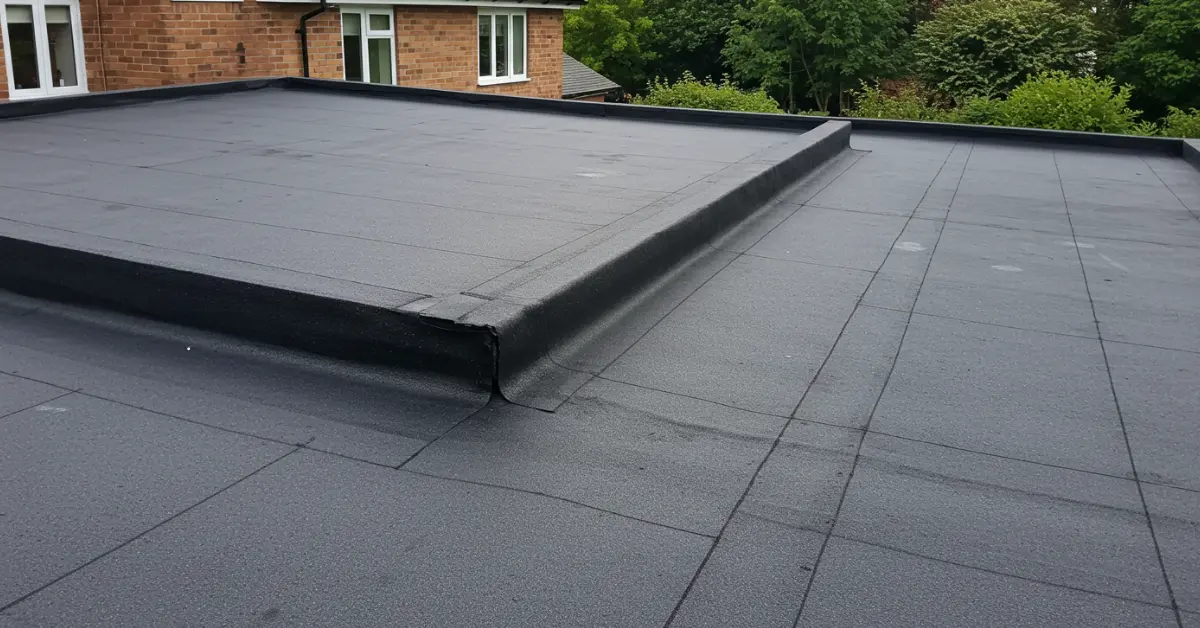
EPDM (Ethylene Propylene Diene Monomer) is a black rubber-like material that’s very common for flat roofing. It’s usually used on garages, home extensions, and sheds.
This material is lightweight and flexible, making it easy to install and use. One of its biggest benefits is that it lasts a long time, about 25 to 40 years if maintained properly. Many people choose this option because it’s affordable and less expensive compared to other materials.
However, since it’s black, it absorbs heat and can make your building hotter in warm climates. Some people paint it white to reflect sunlight. It’s also not the best flat roof material for walking on often because it’s not made for heavy foot traffic.
2. TPO
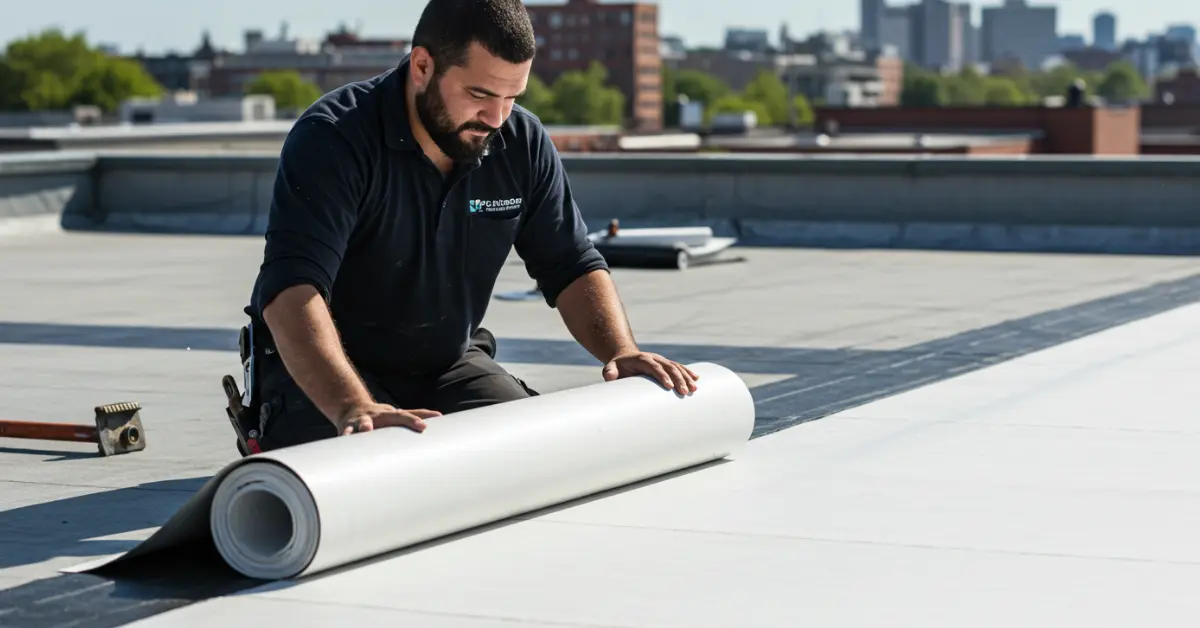
TPO (Thermoplastic Olefin) is a white, single-ply roofing material that reflects sunlight, helping to keep your building cool. It’s gaining popularity in sunny areas due to this energy-saving feature.
It resists mould, dirt, UV rays, and even strong winds, which makes it easy to take care of. The seams are heat-welded, making them very strong and preventing water from entering.
While TPO roofing can cost more than EPDM, it’s still considered affordable. It should be installed by a professional because welding the seams needs special tools. If installed correctly, it can last 20 to 30 years. It’s a great choice for both residential and commercial flat roof materials.
3. PVC
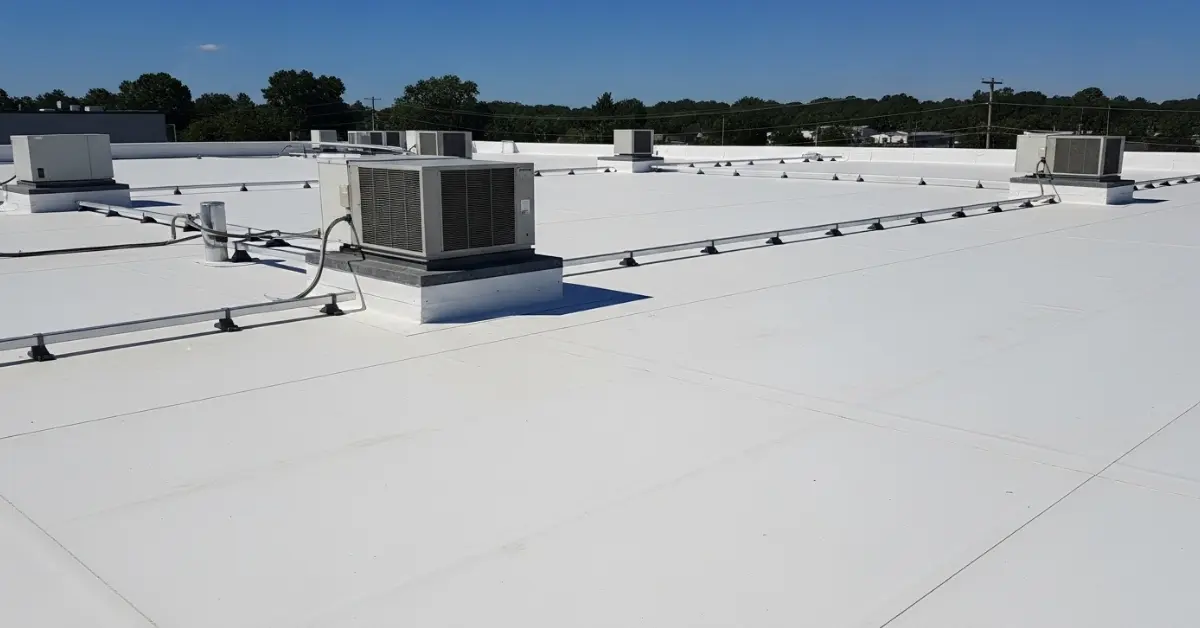
PVC (Polyvinyl Chloride) is a white roofing material known for its strength. It is considered one of the strongest and most durable flat roofing materials, which can last 20 to 30 years or more with proper care.
It’s highly resistant to fire, grease, and chemicals, so it’s commonly used on restaurant roofs, factories, and other commercial buildings. PVC can also handle heavy equipment placed on the roof and occasional foot traffic, which makes it a good option if the roof requires regular access.
Like TPO, it reflects sunlight, which helps reduce cooling costs. However, it’s more expensive than EPDM or TPO, both in terms of material and installation. Also, if not installed properly, it can shrink over time. Still, thanks to its strength and durability, PVC is often seen as one of the best roofing materials for flat roofs.
4. BUR – Built-Up Roofing
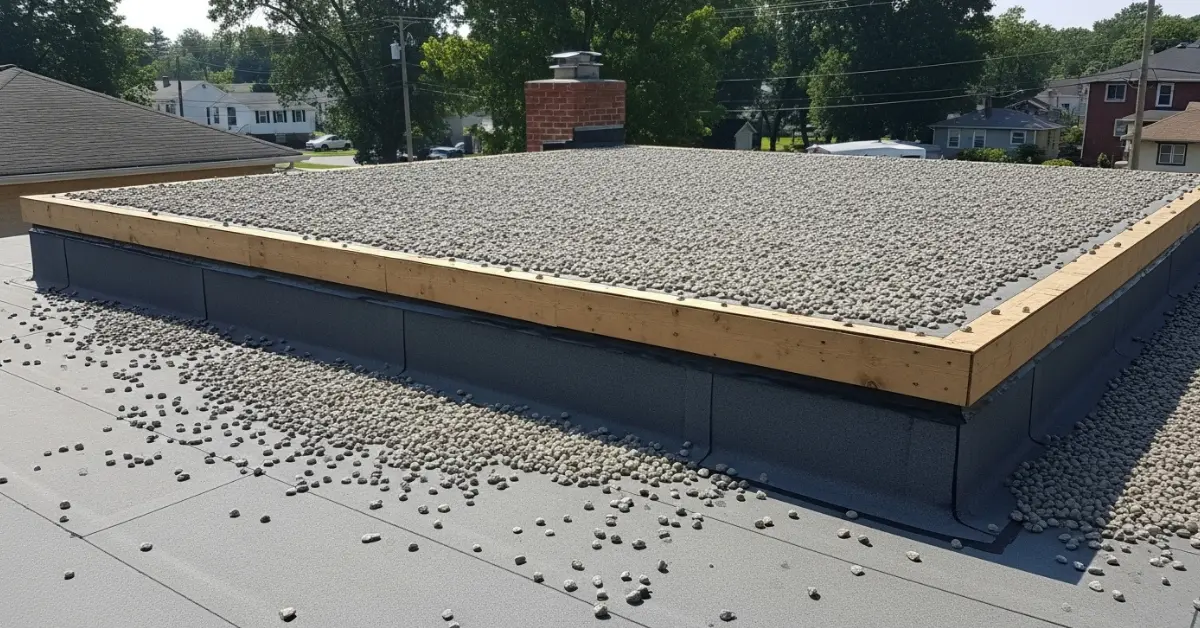
BUR stands for Built-Up Roofing. It’s one of the oldest and most trusted flat roof materials. BUR is made by layering tar (bitumen) and roofing felt, then covering it with gravel. This forms a thick, solid roof that is waterproof and strong enough to walk on.
BUR roofs can last 20 to 30 years or more with good care. The gravel layer adds extra protection from sunlight and makes the roof more durable against damage.
However, BUR is heavy and requires a strong roof structure to support it. Installation takes time and involves hot tar, which emits a strong smell and creates some mess. Still, for those who want a tough and long-lasting roof, especially for commercial flat roof materials, BUR is a great choice.
5. Modified Bitumen
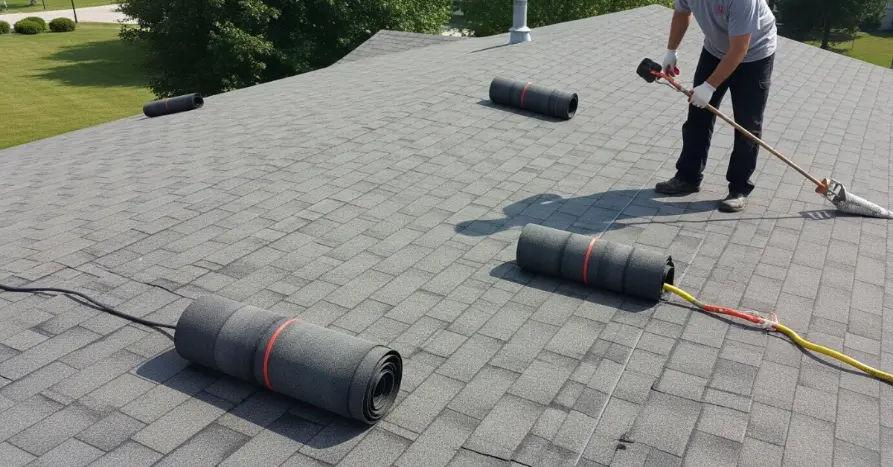
Modified Bitumen is a type of asphalt roofing that has been improved by adding rubber or plastic. This makes it more flexible and less likely to crack. It comes in rolls and is usually installed using heat (a torch) or special adhesives.
This roofing type is often applied in two layers, which makes it stronger and better for foot traffic. It performs well in both hot and cold weather, making it a suitable choice for those who occasionally need a roof that can be walked on.
It usually lasts about 10 to 20 years and is one of the more budget-friendly options. However, using a torch during installation can be risky, so it’s best left to professionals. It’s a solid choice for people looking for affordable flat roofing materials that still offer decent durability.
6. GRP – Fibreglass Roofing
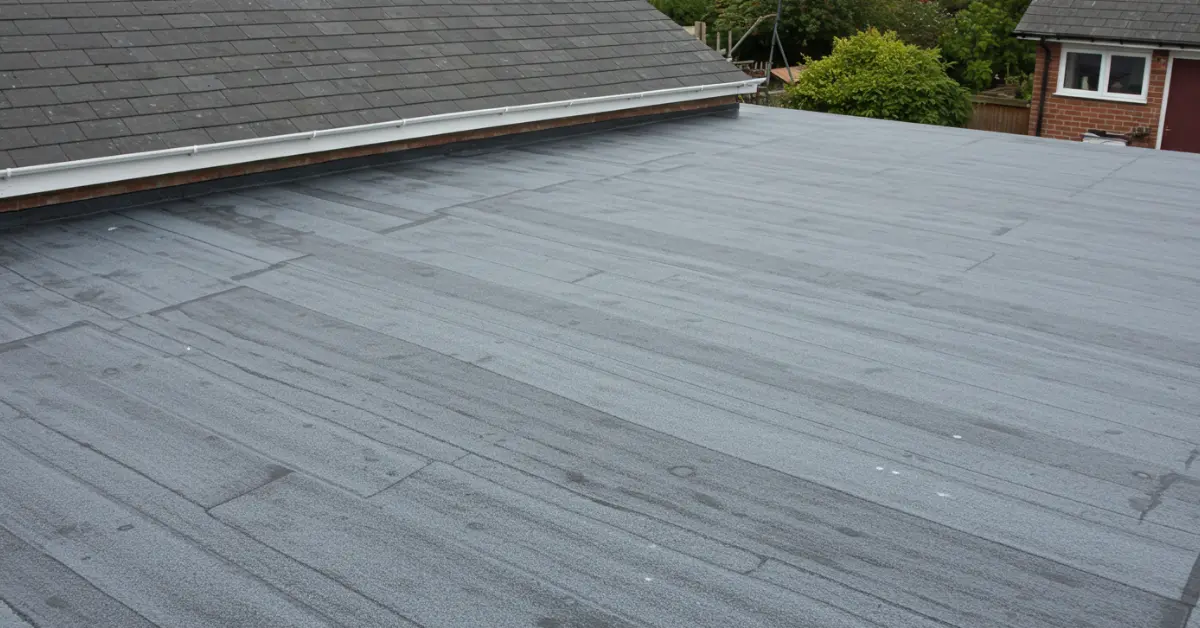
GRP (Glass Reinforced Plastic), also known as fibreglass roofing, is made using fibreglass sheets and a special resin that hardens into a solid, smooth surface. It looks clean and modern and is completely waterproof.
This roofing material is light and strong, and it can also handle some foot traffic. It’s very low-maintenance and can last over 20 years if installed properly. Many people like its shiny finish and the fact that it has no seams, which means fewer chances for leaks.
However, GRP is not the best for very large roofs, and if it’s installed poorly, it can crack, especially if people walk on it too often. It also costs more than some other flat roofing materials, but its modern look and strength make it a good option for residential flat roofs.
Which Flat Roof Material Is Best for Your Roof?
Choosing the best flat roof material depends on three key factors: how you plan to use your roof, the local weather conditions, and your budget. Each option comes with its own strengths, so here’s a clear breakdown to help you decide which one suits your property best.
For Tight Budgets
If affordability is your main concern, EPDM or Modified Bitumen are excellent choices. EPDM is a rubber-like sheet that can last up to 40 years with proper maintenance, while Modified Bitumen is a stronger alternative to traditional asphalt. Both provide reliable protection at a lower cost, making them popular with homeowners who want long-lasting results without overspending.
For Energy Efficiency
In warmer climates or for buildings that struggle with heat, TPO and PVC stand out. These white-colored roofing materials reflect sunlight, keeping indoor temperatures cooler and helping reduce energy bills. TPO is budget-friendly and low-maintenance, while PVC offers extra strength, fire resistance, and durability. Both are well-suited for residential and commercial properties where energy savings are a priority.
For Strength and Foot Traffic
If your roof needs to support equipment, like air conditioning units, or will be accessed frequently, PVC or Built-Up Roofing (BUR) is the best option. PVC can handle regular foot traffic and heavy loads, while BUR features a gravel top layer that adds toughness and durability. These materials are especially suited for commercial roofs where strength and regular access are important.
For Style and Modern Appeal
When looks matter as much as performance, GRP Fibreglass Roofing is a fantastic choice. It offers a smooth, seamless finish that is fully waterproof and easy to maintain. GRP works best on smaller residential flat roofs, providing a sleek, modern look and long-term reliability, even though it costs more upfront.
No matter which flat roof material you choose, the most important factor is correct installation. Even the best materials won’t perform well if they aren’t installed properly. That’s why working with experienced roofers in Lewisham, you get a roof that not only looks great but also provides reliable, long-lasting protection and is built to last.
Conclusion
Each material has its own special use, so the best flat roof materials depend on what you’re looking for, whether it’s saving money, keeping your building cool, or having a strong roof that lasts. Every material has its own features, so it’s good to understand them before making a decision. Choosing the right flat roofing option helps protect your home or building and gives you the best value for years to come.
FAQs
What are the best residential flat roof materials?
EPDM, TPO, and GRP fibreglass are some of the best residential flat roof materials. They offer good weather protection, energy efficiency, and a clean appearance.
What are the best commercial flat roof materials?
PVC, TPO, and BUR are the top choices for commercial flat roofs. These materials are tough, energy-efficient, and ideal for buildings with rooftop systems or high usage.
Is GRP fibreglass roofing worth it?
Yes, GRP gives a modern, seamless finish and is fully waterproof. It’s a good choice for smaller residential flat roof materials where appearance and long-term performance are important.
Is TPO better than EPDM?
TPO reflects sunlight and helps reduce cooling costs, making it better for warm climates. EPDM, on the other hand, is more cost-effective and has a longer lifespan. Both are great roofing materials for flat roofs, but your choice depends on your climate and budget.

